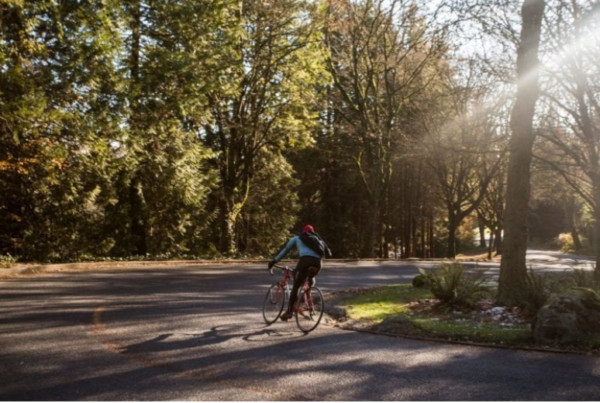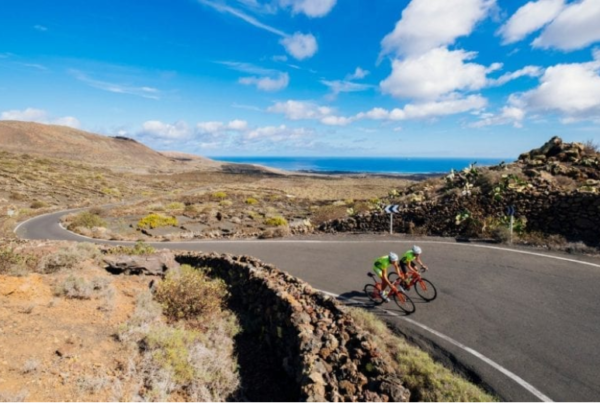Drivers and cyclists, in the U.S. especially, have a love-hate relationship. Cyclists can use these etiquette and road safety tips to do their part in creating a safe environment on the road and avoid an unnecessary incident.
In most states, this is a law cyclists often overlook. Riding against traffic is dangerous, giving drivers less time to react and making it harder for them to judge your speed and distance. When you’re on the fence about how you should behave on the bike, follow the same rules as you would when driving a car.
There are times when the bike lane might move faster than traffic. Unless traffic is at a complete standstill, try to avoid overtaking cars in this scenario. If you pass a vehicle on the right, the driver may not see you when attempting to turn into your path of travel. A safer option is to slow down and ride directly behind slow-moving traffic and move to the right once vehicle speed begins to pick up again.
Unless you’re riding on unlit streets or really early in the morning and need your headlight to see where you’re going, setting your headlight to the strobe setting is a better option. This draws more attention to you and catches the eye of motorists, signaling that a cyclist is approaching. The strobe setting also saves your battery for the ride home.
Cars aren’t your only concern. Sometimes without you knowing, another cyclist will cruise up to your wheel. If you slow suddenly to make a turn, he or she may ride into your wheel. Glancing over your shoulder to make sure it’s safe to turn is always a good habit.
At intersections or entrances when a motorist is attempting to pull into the roadway in your lane of travel, try to make eye contact as soon as possible. This lets you know the driver sees you and is aware of your presence. If you can’t make eye contact, try to make yourself visible by waving your arm; otherwise, slow down until you are sure the motorist isn’t going to pull out in front of you.
Wearing brightly colored clothing makes you more visible to motorists, other cyclists and pedestrians. Instead of opting for black or white jerseys, helmets and shoes, fluorescent green, yellow and red are options that attract more attention and make you easier to see when daylight is limited. Reflective clothing is another excellent option when riding at night.
- READ MORE > 8 SAFETY TIPS TO HELP CYCLISTS AND MOTORISTS SHARE THE ROAD
A cyclist who swerves and frequently comes close to the edge of the bike lane can make drivers uneasy. Be more predictable by traveling in as straight a line as possible. When you need to move left to avoid a hazard, make sure the road is clear and signal your intentions.
Just as you would when driving a car, alerting other drivers and cyclists of your intentions is important to stay safe. Turning, moving into the left lane and alerting other cyclists behind you of approaching hazards are a few of the hand signals you should be aware of and use when you’re out on the road.
A light is always better than no light. Even during the brightest part of the day, today’s high-powered taillights can help cyclists be seen by motorists up to 2 miles away. While $100+ for a light set might seem like a lot to spend, it’s one of the best investments you can make.
Fewer cars and wider lanes will always be safer than tight, narrow roads in heavy traffic. When possible, pick a route off the main roads that have bike lanes. Most major cities have cycling maps available online that show dedicated bike lanes. You can also use the MapMyRide route feature to find a safe route in your area.
Even though it might seem like a safer option than riding on the street, cyclists are actually more likely to be involved in an accident with a motorist when riding on the sidewalk. Cyclists are much less visible when compared to riding directly on the road and aren’t in the motorists’ direct field of vision. Also keep in mind, cycling on the sidewalk is illegal in most states.
Traveling at high speeds in heavy traffic is a recipe for disaster. Instead of trying to sneak in an interval session during rush hour, save these efforts for weekends or times when there are less cars on the road. If this doesn’t fit into your schedule, the indoor trainer is also an excellent option for interval sessions since you won’t have to deal with other vehicles and the constant stopping at red lights and stop signs.
To be safe, you need to be aware of your surroundings. While this means keeping your head on a swivel and being defensive at all times, you also need to be able to hear what’s going on around you. Sirens, car horns or even another cyclist trying to speak to you are things you’ll need to be aware of. Listening to your favorite music might motivate you to push through the pain during a workout, but it doesn’t make you safer on the road.









